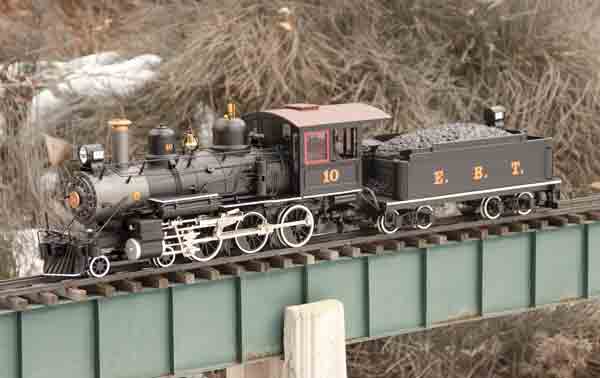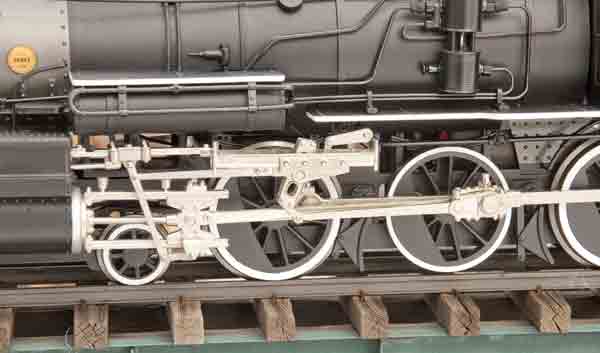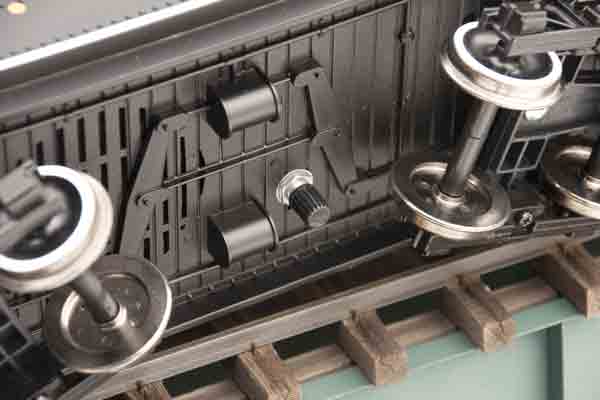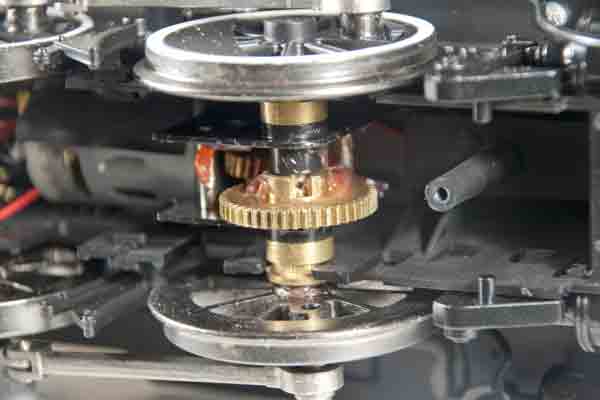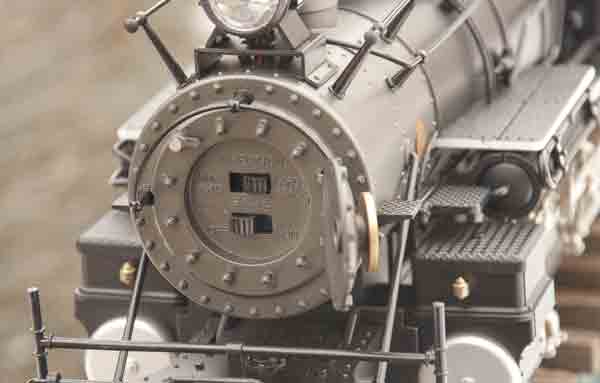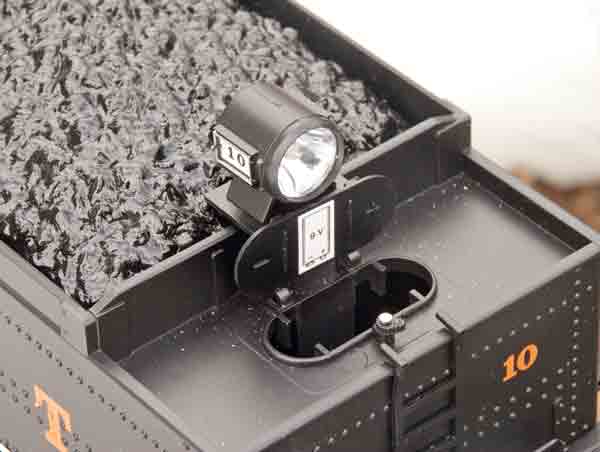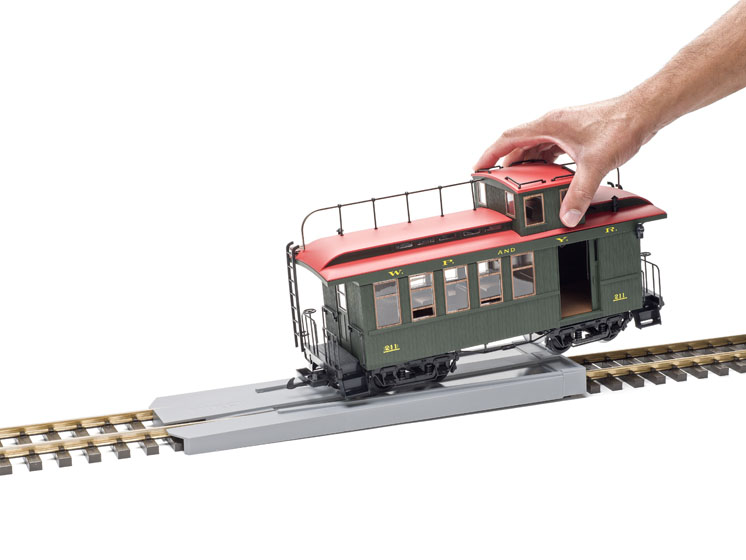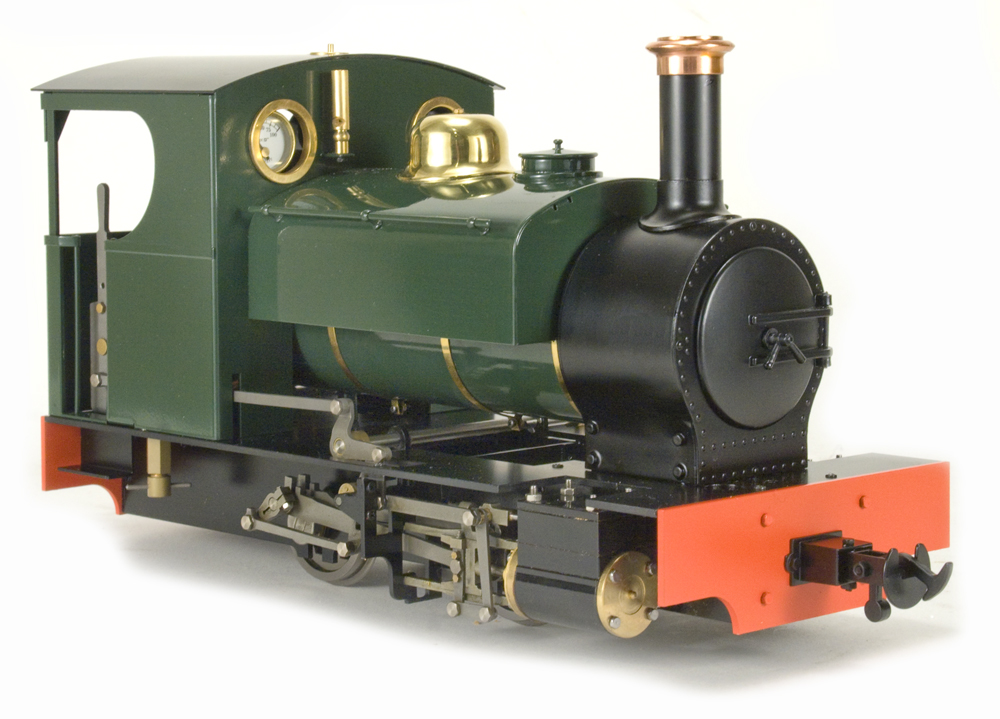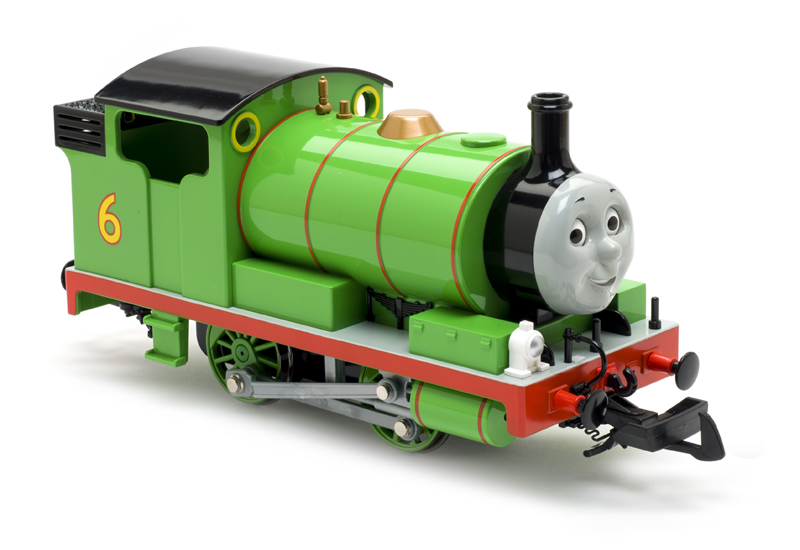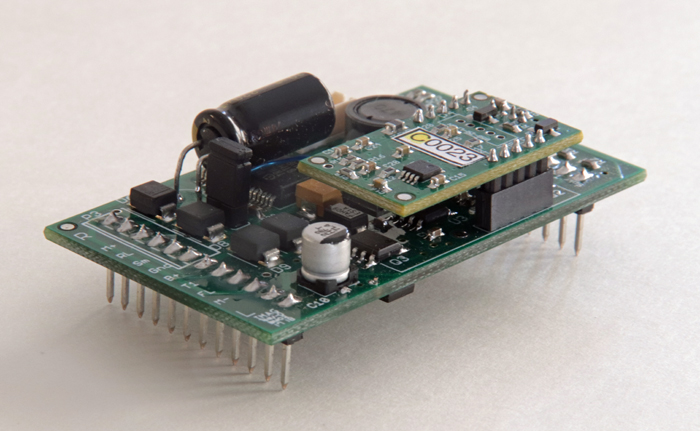Bachmann Industries
1400 East Erie Avenue
Philadelphia PA 19124
Price: $399
Website: www.bachmanntrains.com
Reissue of Bachmann’s “Anniversary Edition” 4-6-0; mostly plastic construction; metal gearing; smoke unit with initial supply of smoke fluid; sound system; updated diecast lead truck; diecast frame; all-metal wheels; various metal detail parts; dummy knuckle on pilot; working knuckle on rear tender truck; switches for smoke unit, polarity, sound system; directional lighting; engineer and fireman included; hook-and-loop coupler (one) included; available in a variety of road names with different detail packages. Dimensions: Length (locomotive and tender), 30″; width, 4¾”; height, 6¾”. Weight (locomotive only) 5 pounds 8 ounces. Tractive effort: 1 pound 7 ounces, or enough to haul a train of around 18 average freight cars on straight, level track
Pros: Good looking locomotive; good paint and graphics; smooth, relatively quiet operation; excellent slow-speed operation; metal drive gearing; metal valve-gear and other details; good level of exterior detail; good cab interior detail
Cons: Lack of instructions of any kind; too much distance between engine and tender; very yellow lights; sound on/off switch difficult to access and operate; very stiff sound and light wires between locomotive and tender
The engine is available in several road names, with simulated valve gear—either Walschaerts or Stephenson—and different detail packages, including stack and domes. Our review sample (#91601) is lettered for the East Broad Top. It has a headlight, a tender light, a smoke unit, and a built-in sound system. It also features diecast Walschaerts valve gear, which is nicely done. The silver finish is a little bright but that could easily be toned down. No scale for the engine is mentioned (it’s listed simply as “large scale”) but previous incarnations have been advertised as G (1:22.5) scale.
My biggest gripe with this engine is that there were no instructions of any kind included, aside from a removable tag on the front of the smokebox that explained about the two switches inside (smoke unit on/off and polarity between NMRA and traditional large scale). There were warranty sheets and a good set of exploded drawings of the entire engine and tender, showing all components, but there wasn’t a word about the engine’s operation or its various features, which led to needless consternation and frustration, especially concerning the sound system.
Two fairly stiff wires project from the front of the tender, which must be plugged into the engine below the rear of the cab. One plug is labeled “Lights” and the other “Sound,” with corresponding receptacles in the engine. No problem. Between the receptacles is a sound on/off switch. This had a red-plastic extension on it that I suppose was there to make it easier to operate. However, this switch was not at all easy to operate and the extension soon popped off. I got it to the “On” position and tried the engine out. No sound. I checked all of the connections. Still no sound. While inspecting the tender, I found that the water hatch behind the bunker opened. This actually turned out to be a battery compartment for a 9V battery. A new one was duly inserted. No sound. It was at this point I’d almost decided I’d received a defective engine. However, after careful study of the exploded drawings, I noticed an unidentified potentiometer wired into the tender. I turned the tender over and found it. I turned it on and. . .sound!
Why couldn’t this have been simply explained on a sheet? And why the redundancy between the potentiometer and the sound on/off switch, since the potentiometer not only controls the volume, it can be used to turn the system off entirely?
Once running, the sound system worked as advertised. It is synchronised to the drivers (only two chuffs per revolution instead of the prototypical four). I would have to describe the sound as “soft” (not sharp) and not very convincing. At about half speed, the chuffs tend to run together; much faster, and they are drowned out by wheel noise. However, at slower speeds the sound is acceptable.
Operating characteristics of the locomotive are quite good. Slow-speed operation is excellent. Top speed, at 24V, is a little fast, but that’s easily dealt with. It has enough tractive effort to haul a train of around 18 average freight cars on straight, level track, which is about right for an engine of its size. The directional lights (very yellow LEDs) work just fine.
The detail level of the engine is good, especially inside the cab, where a multitude of pipes and valves can be seen. A number of the engine’s detail parts are now metal. The whistle and bell both need cords, but a little thread will solve that problem.
A dummy knuckle coupler is fitted to the pilot, while a working knuckle is mounted to the rear tender truck. There is no provision for body mounting a coupler to the tender. A single hook-and-loop coupler replacement is also provided for the tender. Bachmann’s usual engineer and fireman are supplied for the cab. The coupling between the engine and tender leaves a too-wide gap. The stiff connecting wires (lights and sound) exacerbate this problem. A little judicious rewiring and coupling modification could improve the appearance of the engine.
This is the latest incarnation of a classic workhorse of a locomotive, one that is a staple in many garden railways around the world. It’s good looking, well built, and is a good performer, as well as being an excellent candidate for modification and kitbashing. It’s nice to see Bachmann’s ongoing investment in continually upgrading this model over the years.





